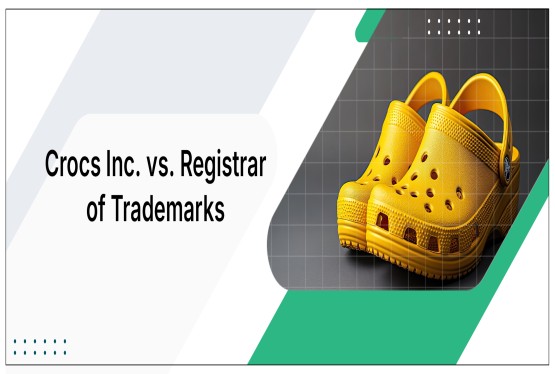Iintricate patterns and priceless materials come together in the Indian jewelry industry, which combines craftsmanship, tradition, and business to produce valuable and beautiful items. For jewelry companies looking to preserve their distinctive creations and brand identification in this highly competitive industry, protecting intellectual property (IP) is essential. In order to safeguard creative expression, brand awareness, and technological innovation, this article examines the strategic application of patents, copyrights, trademarks, and design rights in the Indian jewelry industry. We will examine pertinent legal frameworks, seminal case studies, and useful advice for jewelry companies negotiating the challenges of intellectual property protection in this fast-paced sector.
Trademarks in the Jewellery Industry
Trademark protection is instrumental in establishing brand identity and preventing consumer confusion in the jewellery sector. In India, trademarks are governed by the Trademarks Act, 1999, which provides for the trademark registration and enforcement of trademarks. Jewellery businesses can register trademarks for their brand names, logos, and product designs to distinguish their goods from those of competitors.
Case Law Example: In the case of Titan Industries Ltd. v. M/s Ramkumar Jewellers, the Delhi High Court upheld the protection of the Titan trademark against Trademark infringement by a jewellery retailer, emphasizing the importance of brand reputation and consumer perception in the jewellery market.
Copyrights and Jewellery Designs
Copyright law protects original artistic expressions, including jewellery designs, under the Copyright Act, 1957. To qualify for copyright protection, a jewellery design must exhibit creativity and originality beyond mere mechanical skill. Copyright grants the creator exclusive rights to reproduce, distribute, and display their designs, providing a valuable tool for combating unauthorized copying and reproduction.
Statutory Reference: Section 2(c) of the Copyright Act defines "artistic work" to include designs or patterns applied to any article. This provision extends copyright protection to jewellery designs that meet the criteria of originality and creativity.
Design Rights in Jewellery
Design rights protect the aesthetic appearance of functional products, including jewellery designs, under the Designs Act, 2000. Registered designs confer exclusive rights to reproduce and distribute the design for a specified period, typically ten years from the date of registration. Design registration provides a cost-effective means for jewellery businesses to protect their innovative designs from imitation and unauthorized use.
Precedent: The landmark case of Maganlal Chhaganlal (P) Ltd. v. Mani Udyog established that designs applied to jewellery articles can be protected under the Designs Act, reinforcing the importance of design registration in safeguarding intellectual property.
Patents and Innovative Jewellery Technology
While less common, patents can protect novel and non-obvious inventions in jewellery manufacturing processes, materials, or technology. In India, patents are governed by the Patents Act, 1970, which grants exclusive rights to inventors to prevent others from making, using, or selling their patented inventions without permission. Patent protection encourages innovation in jewellery technology and provides a competitive advantage to businesses investing in research and development.
Legal Framework: Section 2(1)(j) of the Patents Act defines "invention" broadly to include any new and useful process, machine, manufacture, or composition of matter. This definition encompasses innovative jewellery manufacturing processes and materials eligible for patent protection.
Enforcement and Remedies
Effective enforcement of intellectual property rights is essential for maintaining market integrity and preventing infringement in the jewellery industry. Remedies available to rights holders in India include injunctions, damages, account of profits, and seizure of infringing goods. Courts play a crucial role in adjudicating IP disputes and protecting the interests of jewellery businesses against counterfeiters and unauthorized users.
Case Study: In the case of Kedia Jewellers v. Shri Kedarnath Chandra Swain, the Calcutta High Court granted an injunction restraining the defendant from infringing the plaintiff's registered design in jewellery, highlighting the court's role in safeguarding design rights in the jewellery sector.
Conclusion
In conclusion, intellectual property law provides a robust framework for protecting creativity and innovation in the jewellery business in India. By strategically leveraging trademarks, copyrights, designs, and patents, jewellery businesses can safeguard their unique designs, brand identities, and technological innovations from unauthorized use and exploitation. Understanding and implementing these legal protections are essential steps towards fostering a competitive and sustainable environment in the vibrant jewellery industry.
By adhering to the principles of intellectual property law and staying abreast of legal developments, jewellery businesses can effectively navigate the complexities of IP rights management and position themselves for long-term success in the global marketplace.
FAQs
Q1. What are the key types of intellectual property protection relevant to the jewellery industry in India?
Ans. The main types include trademarks (for brand names and logos), copyrights (for original artistic jewellery designs), design registrations (for the aesthetic appearance of jewellery), and patents (for innovative jewellery manufacturing processes or materials).
Q2. How does copyright protect jewellery designs?
Ans. Copyright protection under the Copyright Act, 1957, safeguards the original artistic expression embodied in a jewellery design, provided it demonstrates creativity and originality beyond mere mechanical skill. This prevents unauthorized reproduction, distribution, or display of the design.
Q3. What is the purpose of registering a design for jewellery?
Ans. Design registration under the Designs Act, 2000, protects the aesthetic appearance of the jewellery piece. It grants the owner exclusive rights to reproduce and distribute the registered design for a specific period, preventing competitors from imitating the look of their jewellery.
Q4. Are patents commonly used in the jewellery industry, and if so, for what?
Ans. While less common than other forms of IP, patents can be valuable for protecting novel and non-obvious inventions related to jewellery manufacturing processes, materials, or technologies. This could include a new clasp mechanism, a unique alloy, or an innovative production technique.
Q5. What are some of the remedies available to a jewellery business if its intellectual property rights are infringed?
Ans. If someone infringes on a jewellery business's IP rights, they can seek remedies such as injunctions (to stop the infringing activity), damages or an account of profits (financial compensation for losses), and the seizure of counterfeit goods.






























_(b)_of_the_Trademark_Act,_1999_(1)_crop10_thumb.jpg)



_crop10_thumb.jpg)




























_crop10_thumb.jpg)
_crop10_thumb.jpg)






_crop10_thumb.jpg)








_crop10_thumb.jpg)



_crop10_thumb.jpg)





























_crop10_thumb.jpg)

















_crop10_thumb.jpg)






_crop10_thumb.jpg)












































































































































_crop10_thumb.jpg)



































_crop10_thumb.jpg)












_crop10_thumb.jpg)































